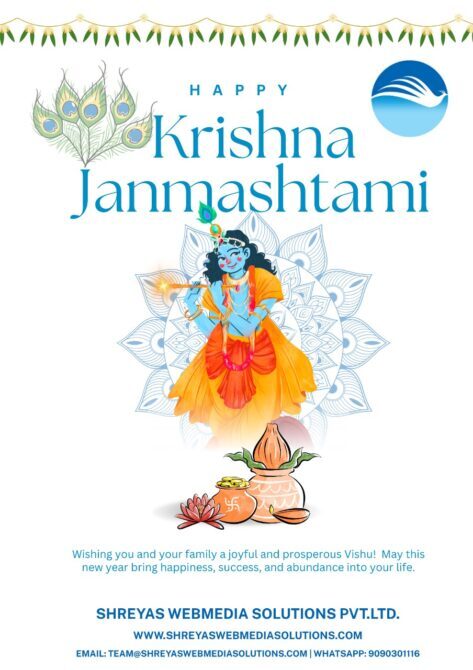Janmashtami 2025 – Significance, Rituals, and Celebrations of Lord Krishna’s Birth
A Spiritual Festival Celebrating the Divine Incarnation of Lord Krishna
August 14, 2025: Janmashtami, also known as Krishna Janmashtami or Gokulashtami, is one of the most beloved Hindu festivals, marking the birth of Lord Krishna, the eighth avatar of Lord Vishnu. In 2025, the real date of Janmashtami falls on Friday, August 15, with some regions extending celebrations into the following day due to differences in the lunar calendar. This is why many devotees may wonder — Is Janmashtami two days this year? The answer is yes; in certain parts of India, Janmashtami will be observed across both August 15 and August 16 to align with regional traditions and astrological timings.

Significance of Janmashtami
Lord Krishna’s birth is a divine event described in sacred texts, symbolizing the triumph of good over evil. Born at midnight in Mathura to Devaki and Vasudeva, Krishna’s life story teaches the values of truth, devotion, courage, and compassion. His teachings in the Bhagavad Gita remain a guiding light for millions.
For many, Janmashtami is not just about remembering the day when Lord Krishna was born in 2025’s calendar cycle, but also about reflecting on how his wisdom applies to modern life.
When to Keep Fast for Janmashtami 2025
Fasting is a key part of the festival. In 2025, the Janmashtami vrat (fast) should be observed starting from the morning of August 15, with devotees breaking the fast after midnight, once Krishna’s birth hour has passed. In places where celebrations extend into August 16, some devotees may choose to fast on the second day instead, depending on their local temple customs.
Rituals and Traditions of Janmashtami
1. Midnight Celebrations
As Krishna was born at midnight, temples and homes come alive with bells, conch shells, devotional singing, and joyous chanting.
2. Jhanki and Cradle Ceremony
Small idols of baby Krishna are placed in decorated cradles, and scenes from his life are artistically displayed in miniature setups called jhankis.
3. Krishna Abhishekam
Krishna idols are ceremonially bathed with milk, honey, curd, ghee, and sugar, dressed in beautiful garments, and adorned with flowers and jewelry.
4. Dahi Handi
In Maharashtra and parts of Gujarat, Janmashtami celebrations continue the next day with Dahi Handi—a playful reenactment of Krishna’s butter-stealing adventures.
Celebrations Across India
Mathura & Vrindavan: Temples organize grand processions, spiritual dramas, and nonstop devotional music.
Maharashtra: Youth groups form human pyramids to break Dahi Handi pots.
Gujarat: Dwarka’s temples are decorated magnificently, attracting thousands of devotees.
South India: Homes are adorned with tiny footprints symbolizing Krishna’s arrival.
Special Foods for Janmashtami
During the fast, devotees prepare dishes like makhan mishri (butter and sugar), sabudana khichdi, panchamrit, kheer, and other milk-based sweets. These foods reflect Krishna’s legendary love for dairy products.
Spiritual Lessons from Janmashtami
The festival reminds us to:
Live with righteousness and truth.
Perform duties without attachment to results.
Keep faith in divine will.
Spread joy and love, just as Krishna did.
Conclusion
Janmashtami 2025 will be a vibrant celebration of devotion, music, dance, and faith. Whether observed on August 15 or across two days, the essence remains the same—welcoming the divine presence of Lord Krishna into our hearts and homes. From fasting rituals to midnight prayers, from Dahi Handi to soulful bhajans, the festival continues to inspire generations to live with love, humility, and spiritual strength.